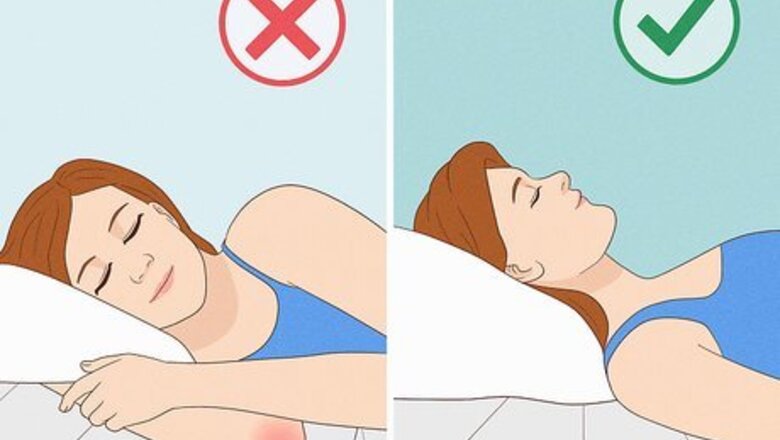
views
Sleep on your back.
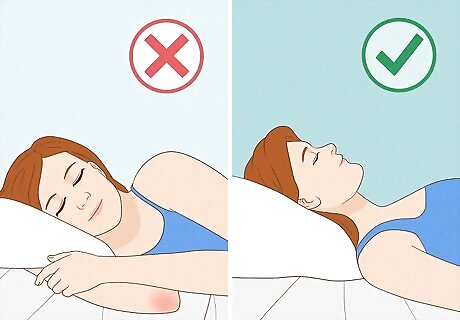
Avoid sleeping on the affected arm. Sleeping on your side can restrict the blood flow to injured tendons, which may put a strain on your already irritated tendons and increase discomfort. Instead, try sleeping on your back with your arms by your side or resting on your stomach to alleviate pressure in your arm and boost your healing while you rest. Even if you sleep on the unaffected side, your upper arm can put strain on your elbow. Sleeping on your stomach can cause compression and irritation in your neck and upper back, which can increase strain on your elbow. Try putting a small towel in the arch of your back to help support your back while you’re sleeping.
Keep your arms down by your side.
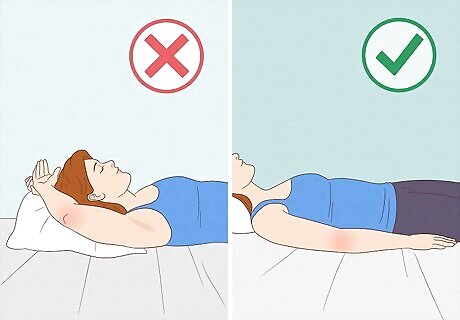
Avoid putting your arm above your head. A study from 2019 found that tennis elbow patients who slept with their arms down below their heads improved faster than patients who slept with their arms above their heads. Try to sleep with your arms gently resting at your side or on your stomach.
Support your elbows with pillows.
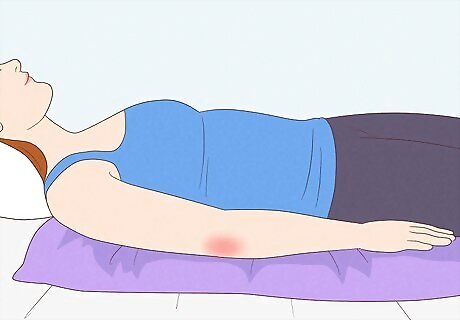
Place pillows underneath your elbows to promote blood flow. If you sleep on your side normally, you may try to flip from your back to your side while you’re sleeping, which can cause pain and stress on your tendons. To hold your arm in place and relieve tension in your upper arm muscles, slide a soft pillow underneath the affected elbow before you go to sleep. If you’re sleeping on your unaffected side, you can try placing a pillow between your body and your elbow to alleviate pressure, however, sleeping on your back is generally best.
Wear an arm brace.
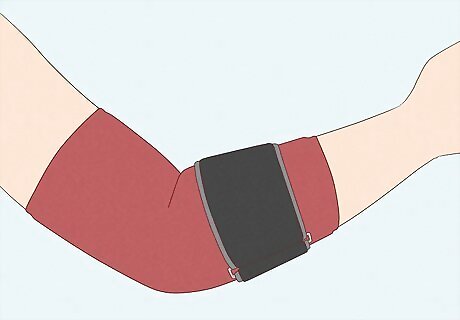
Use a brace to reduce pressure on your tendons if you clench your fists. If you tend to clench your fists while sleeping, wearing a brace to bed might reduce pressure on injured tendons by keeping the forearm muscles from contracting. A counter force brace that wraps around the upper part of your forearm may also help take pressure off your muscles. Consider wearing a brace during the day while you’re doing repetitive activities like working out or playing sports, as well. If you’re interested in wearing a brace while sleeping, ask a GP or physiotherapist what type of brace or splint they recommend.
Stretch your elbow before bed.
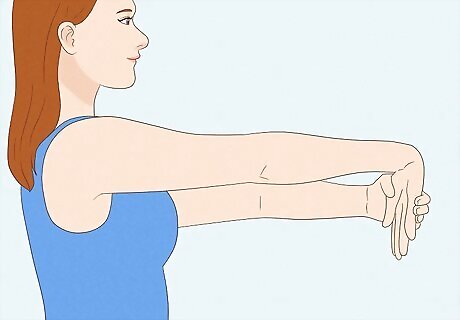
Stretching your muscles can reduce pain. Straighten your elbow out with the palm of your hand facing the ground, use your other hand to gently pull your fingers down toward the underside of your wrist, and hold this position for 30 seconds. Then flip your palm over and do the same motion, pushing your fingers to the floor. To stretch your forearm a different way, rest your arm at your side with your palm facing behind you, make a small fist, extend your arm about 3 in (7.6 cm) behind you, and flex your hand. You can also place a rubber band around your thumb and fingers while cupping your hand. Spread your fingers apart, then back together 10 times for 3 sets.
Limit your activity and ice your elbow during the day.
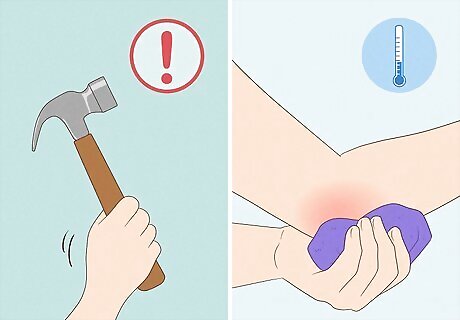
Avoid exerting yourself to reduce pain at night. Usually, modifying or avoiding painful activities for several weeks can allow tennis elbow to heal on its own. In the meantime, to help alleviate pain and reduce inflammation, ice your elbow for 15 minutes a few times a day and avoid repetitive movements that cause pain. Take regular breaks when you’re performing repetitive activities like hammering, writing, or typing. You can also take anti-inflammatory medicines like ibuprofen to help temporarily alleviate pain and discomfort.
















Comments
0 comment